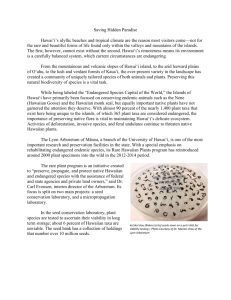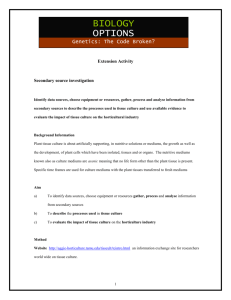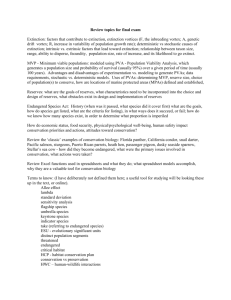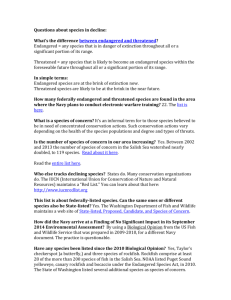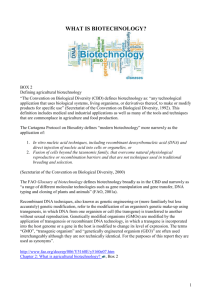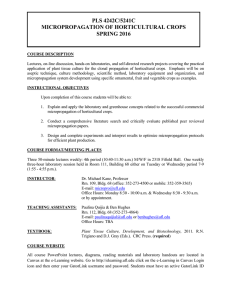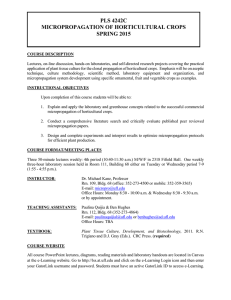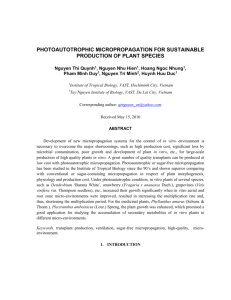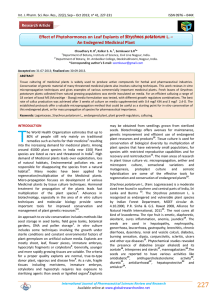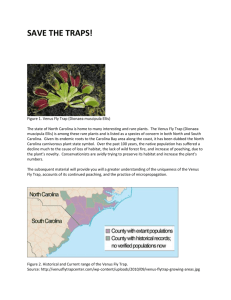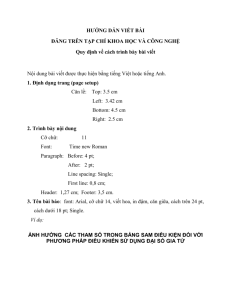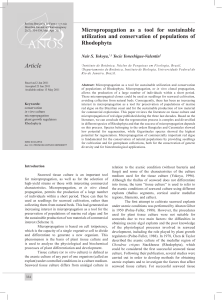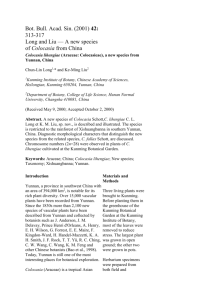Abstract
advertisement
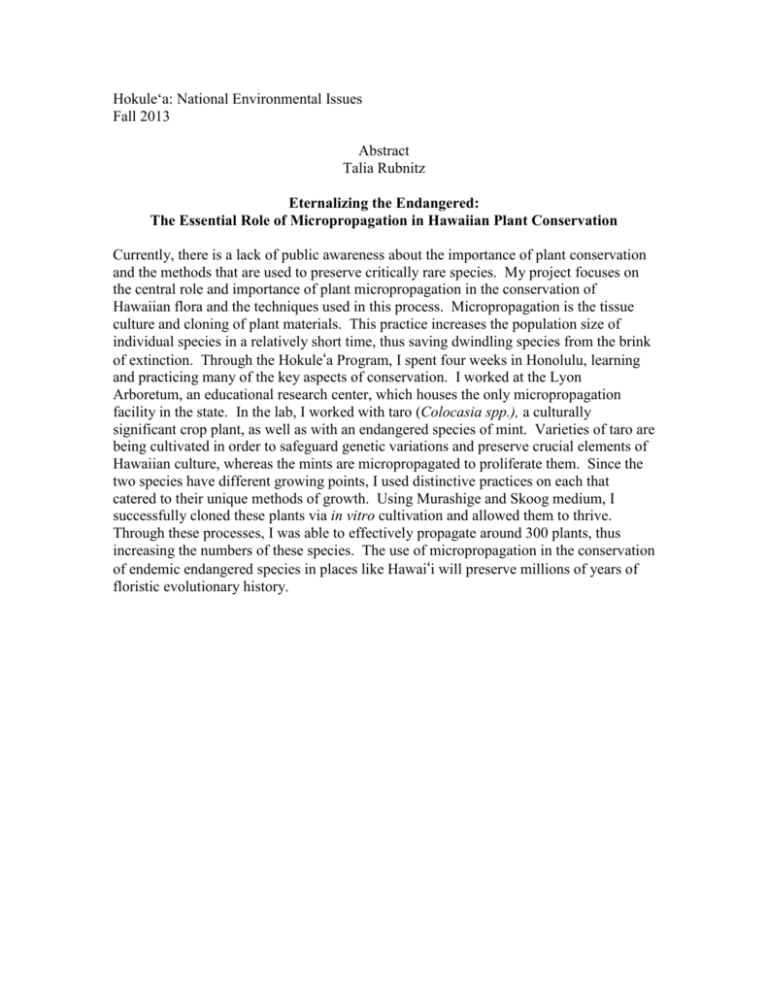
Hokule‘a: National Environmental Issues Fall 2013 Abstract Talia Rubnitz Eternalizing the Endangered: The Essential Role of Micropropagation in Hawaiian Plant Conservation Currently, there is a lack of public awareness about the importance of plant conservation and the methods that are used to preserve critically rare species. My project focuses on the central role and importance of plant micropropagation in the conservation of Hawaiian flora and the techniques used in this process. Micropropagation is the tissue culture and cloning of plant materials. This practice increases the population size of individual species in a relatively short time, thus saving dwindling species from the brink of extinction. Through the Hokuleʻa Program, I spent four weeks in Honolulu, learning and practicing many of the key aspects of conservation. I worked at the Lyon Arboretum, an educational research center, which houses the only micropropagation facility in the state. In the lab, I worked with taro (Colocasia spp.), a culturally significant crop plant, as well as with an endangered species of mint. Varieties of taro are being cultivated in order to safeguard genetic variations and preserve crucial elements of Hawaiian culture, whereas the mints are micropropagated to proliferate them. Since the two species have different growing points, I used distinctive practices on each that catered to their unique methods of growth. Using Murashige and Skoog medium, I successfully cloned these plants via in vitro cultivation and allowed them to thrive. Through these processes, I was able to effectively propagate around 300 plants, thus increasing the numbers of these species. The use of micropropagation in the conservation of endemic endangered species in places like Hawaiʻi will preserve millions of years of floristic evolutionary history.

